These Vegan Madeleines are buttery, light, and airy biscuits with a hint of vanilla and made without eggs or dairy. They are the perfect plant-based version of the real French madeleines.
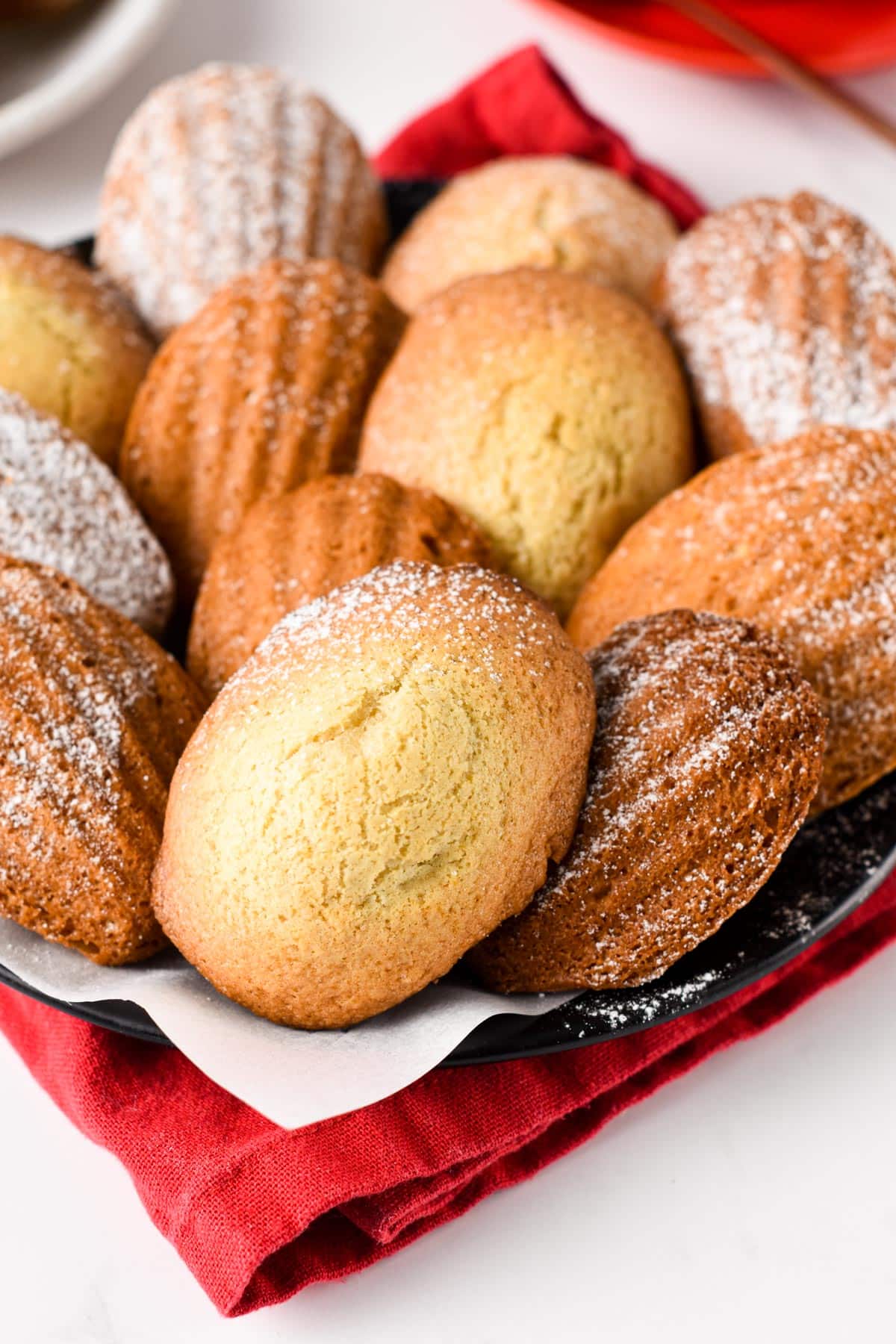
Madeleines are a French favorite childhood comfort food for many people, just as standard in French culture as the Crepes, the Almond Croissant Pastry, and the French Toast.
They are one of these daily biscuits or bite-sized cakes that kids have after school in France and that all mums have in their pantry.
Are Classic Madeleines Vegan?
Unfortunately, like many French pastry recipes, the classic recipe is made with eggs, often two or more, butter, and sometimes a touch of honey. So since madeleines are not vegan, I decided to create my version that brings back so many childhood memories.
What Are Madeleines?
Madeleines are French biscuits with a vanilla-flavored sponge-like texture. The classic Madeleines de Commercy are popular for their shell shape, buttery and airy texture, and signature taste. It’s a classic recipe from Eastern France that kids often have as an after-school snack.
The French idiom used to describe any cherished memory is “Madeleine de Proust” in reference to how the famous author Marcel Proust remembered his loved treats in the first volume of the novel In Search Of Loved Time.
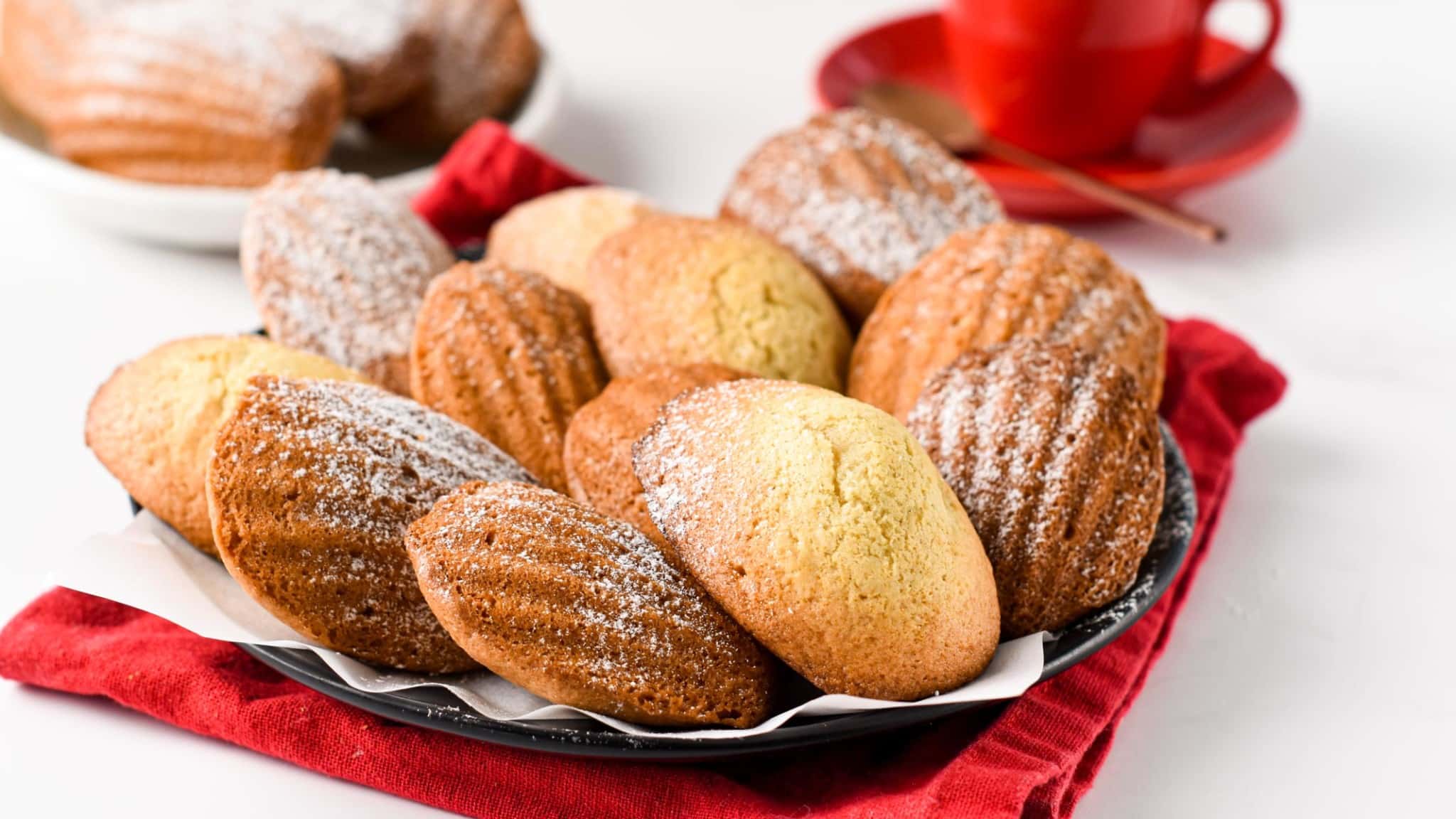
Ingredients
Below are the ingredients needed to make the best madeleines without eggs or butter.
- All-Purpose Flour – No substitution is possible. You must use wheat flour for good results in this recipe.
- Baking Powder – for the airy texture.
- Baking Soda – The classic recipe has no baking soda, but this helps the vegan madeleine raise better.
- Sugar – You must use white or caster sugar for this recipe otherwise, you won’t achieve the best crispy shell and golden color of the madeleines.
- Light Olive Oil or canola oil – I tried melted vegan butter, and the result wasn’t as good and buttery, so oil is necessary. While coconut oil might work, I don’t recommend it.
- Vegan Yogurt – Prefer unsweetened plant-based yogurt like soy yogurt or coconut yogurt. I’ve tried almond milk and soy milk, and plant-based milk doesn’t work as well.
- Plant Based milk – any varieties like coconut milk, almond milk, oat milk
- Vanilla Extract – For a traditional taste.
- Optional – You can flavor the madeleine with lemon zest, almond extract, or lemon extract.
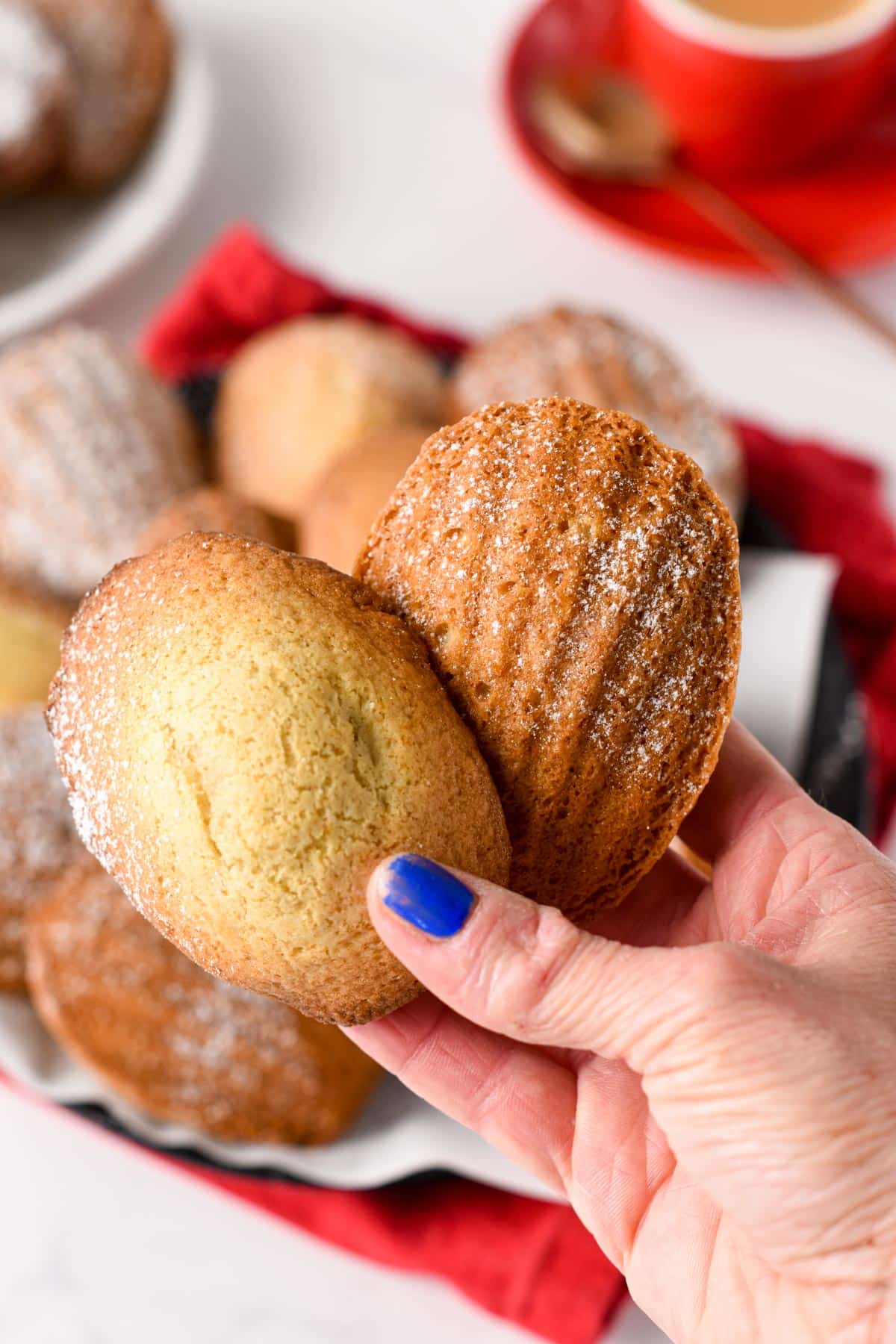
How To Make Vegan Madeleines
If you are a French pastry chef, pass your way because my techniques to make egg-free madeleines aren’t quite conventional.
The way I designed this vegan version of the madeleine is a very scientific approach. After reading about how the traditional recipe requires cream, eggs, and sugar to make the madeleine raise, I tried to figure out how I could achieve the same result without eggs.
So the baking technique I list below to make vegan French madeleines are not the ones you will see in a classic madeleine recipe.
However, it does work like magic!
- First, preheat the oven to 430°F (220°C). Slightly oil the madeleine pan with olive oil spray. Set aside.
- Next, in a large bowl, use a hand whisk to vigorously whisk the olive oil, vegan yogurt, dairy-free milk, sugar, and vanilla extract until creamy and smooth. It takes barely 20 seconds.
- Now, sift the flour, baking powder, and baking soda on top of the bowl.
- Finally, use a silicone spatula to gently bring the flour into the liquid ingredients creating a smooth, runny batter.
- This is my first unconventional tip to make the best vegan madeleine that actually gets a real hump in the center.
- Pop the mixing bowl in the freezer, not the refrigerator, for exactly 10 minutes – no more or less or it will impact the baking time afterward.
- Remove the bowl from the freezer. The batter should be very thick by now, and that’s exactly what you want. If you have never made madeleines before, you should know that the cavity should be filled only to 3/4 of its volume. Actually, you should not spread the batter in the cavity but simply scoop out 1 1/2 tablespoon of batter (about 22 ml) in the center of the cavity. I used a small cookie dough scoop to work with precision and fill the hole with the same amount of batter every time.
- The trick to making madeleine raise in the center is to bake the recipe in two steps. Step 1: Bake them for 3 minutes 30 seconds at 430°F (220°C). Step 2: Reduce the heat to 320°F (160°C) and keep baking from 5 to 7 minutes. Madeleines bake really fast because they are very small. You know they are ready when they have raised in the middle, and the bump of the madeleine is still white while the sides are golden brown.
- Insert a pick in the higher part of the madeleine, if it comes out clean, they are ready to cool down.
- Remove the pan from the oven and cool immediately on a wire rack with the shell side on the rack.
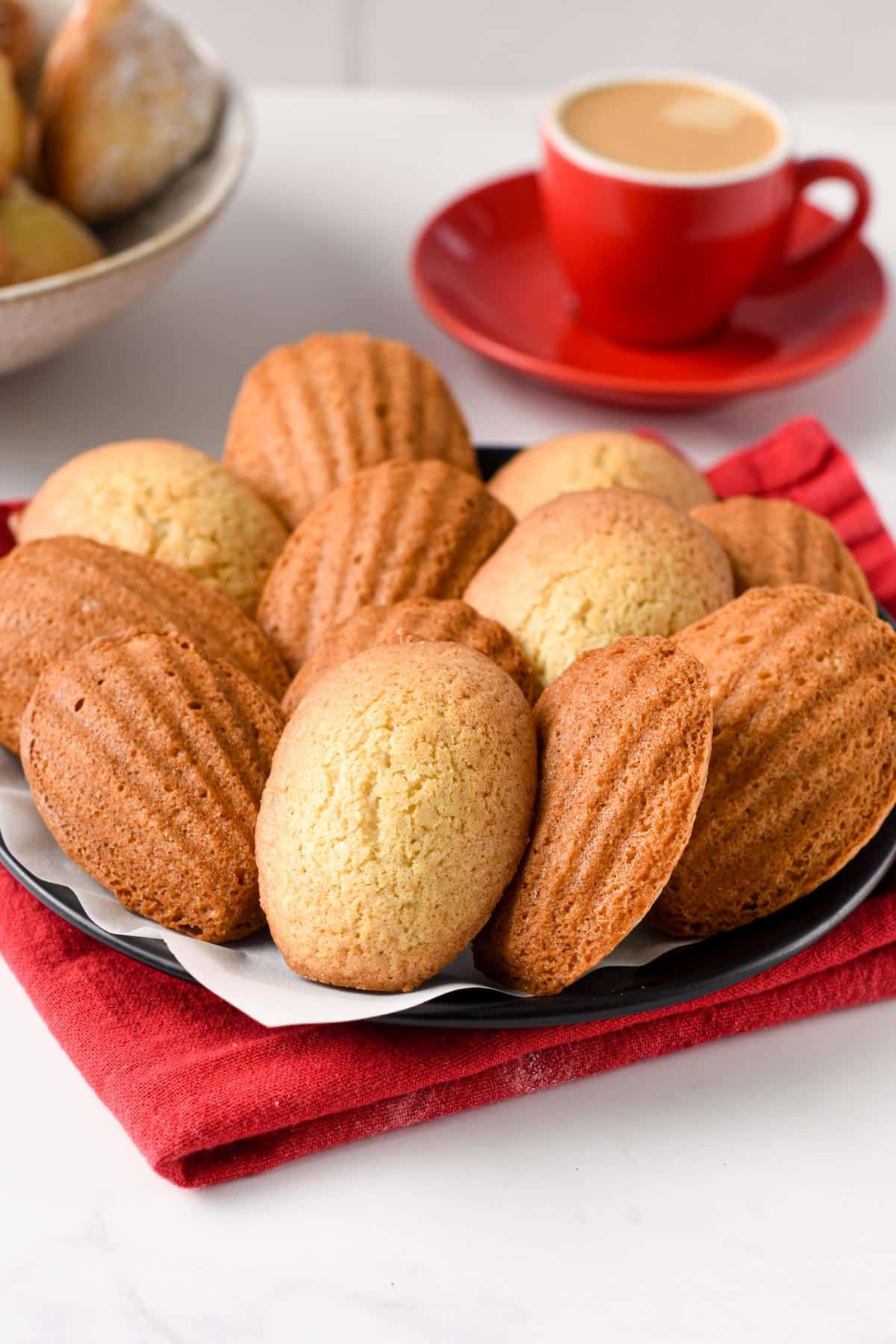
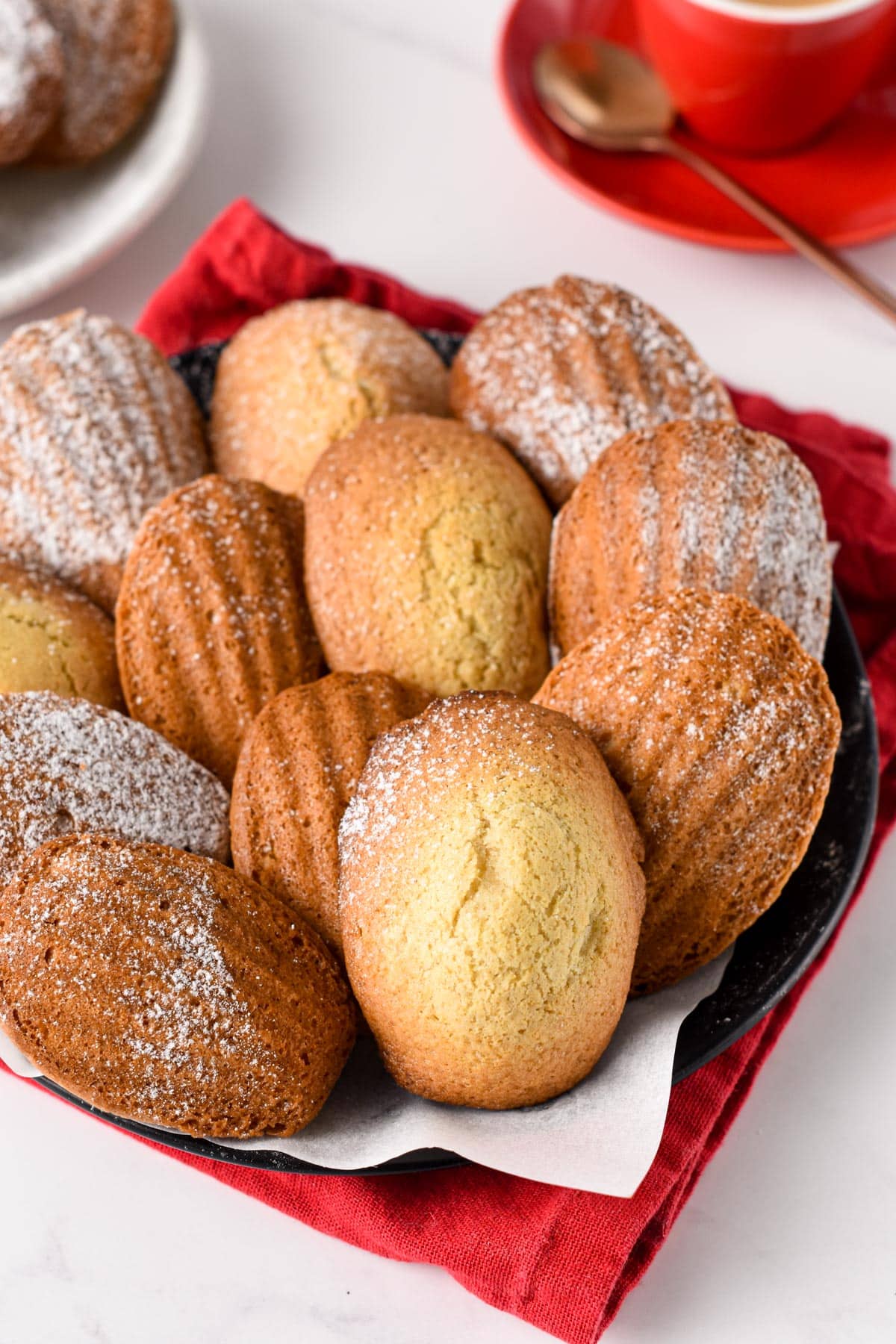
Decorating Madeleines
French people don’t decorate madeleines. It’s a plain vanilla biscuit that we eat simply like Americans would eat plain vanilla muffins.
However, if you fancy some decoration, you can try simple things like:
- Dust of powdered sugar
- Dip shell into melted chocolate
- Sprinkles
Storage Instructions
You can store the madeleines in a cookie box at room temperature for 3 to 4 days as long as they stay in a cool, dark place. However, it’s quite likely they will all be gone long before that.
If you made a large batch, you can freeze them for up to three months in zip lock bags and thaw them at room temperature the day before.
Frequently Asked Questions
Below are my answers to your most frequent questions about this French recipe.
No, French madeleines contain eggs. butter, and sometimes a touch of honey. So they are not vegan-friendly but easy to make at home with some simple swaps.
You can replace the vegetable oil with melted vegan butter, but I found the texture of the madeleine more buttery with a better yellow shade using olive oil.
I didn’t try any sugar alternative to make madeleine. I am sure sugar-free xylitol or erythritol will work in the same amount to cut down sugar.
However, the color may be less golden on the sides and bottom.
You can probably use an all-purpose gluten-free flour blend containing added gum and achieve similar results.
Again, I didn’t try this option so I can guarantee the results.
You can bake madeleines in a muffin pan, preferably in a mini muffin shape because you need to stick to a max of 2 tablespoons of batter to achieve a real madeleine texture or they will turn into madeleine muffins.
Madeleines get their hump because the mold is deeper in the middle. Since it contains more batter than the edges, when it doubles in size while baking, it develops a large hump.
Madeleines have a similar texture and taste to vanilla sponge cakes, but their smaller size gives them a different texture. Since they have more shallow edges than cake, you can taste the caramelized sugar much more than on a slice of sponge cake.
According to the legend, Madeleines were named after the person who baked these little cakes for King Louis XV, Madeleine Paulmier.
More Vegan French recipes
Below are French-inspired vegan recipes for you to try:
Did You Like This Recipe?
Leave a comment below or head to our Facebook page for tips, our Instagram page for inspiration, our Pinterest for saving recipes, and Flipboard to get all the new ones!
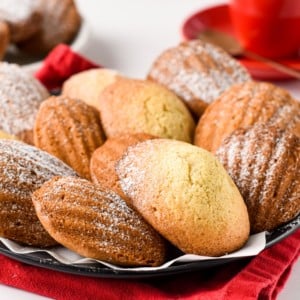
Vegan Madeleines
Ingredients
- 1 cup All-Purpose Flour
- 1 teaspoon Baking powder
- ½ teaspoon Baking Soda
- ¾ cup Sugar
- 1 teaspoon Vanilla Extract
- ¼ cup Light Olive Oil
- ¼ cup Dairy-Free Yogurt
- ¼ cup Plant-Based Milk - almond milk or coconut milk
Instructions
- Preheat the oven to 430°F (220°C). Grease a 12-hole madeleine pan with olive oil spray. Set aside.
- In a large bowl, whisk vigorously vegan yogurt, dairy-free milk, sugar, vanilla, and olive oil.
- Sift flour, baking powder, and baking soda on top of the bowl.
- Stir gently with a spatula until the batter is smooth and runny.
- Pop the bowl for 10 minutes in the freezer to cool the batter quickly. This will make the madeleine raise perfectly in the center, so don't skip.
- Remove the bowl from the freezer. Use a small cookie dough scoop to scoop out the batter from the bowl, about 1 1/2 tablespoon, and place the batter in the center of each madeleine cavity. The recipe makes 18 madeleines so you will have leftovers to bake in a second batch later. Keep the leftover in the fridge while the madeleines are baking.
- Bake for 3 minutes and 30 seconds at 430°F (220°C), then decrease the heat to 320°F (160°C) and keep baking for 5-7 minutes. Watch the madeleines carefully, they are ready when golden-brown on the sides, still white in the middle but a pick inserted in the center comes out clean.
- Cool down immediately on a wire rack on the shell side to keep the bump of each madeleine.
- Cool the tray for 15 minutes. Meanwhile, pop the remaining batter in the freezer for 10 minutes again. Repeat the steps above to bake the remaining 6 madeleines.
Storage
- Store the madeleines in a cookie box at room temperature, in a cool dry dark place for 3-4 days or freeze them for up to 3 months in zip lock bags and thaw them at room temperature the day before.


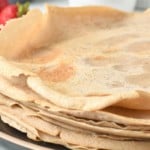



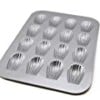
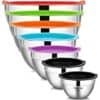
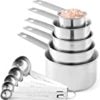



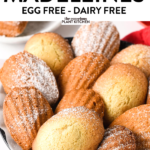
Hi! Can avocado oil be used? Thank you!
It will have a avocadoish taste and texture won’t be the same, often denser with avocado oil
I’ve read that other vegan madeleine recipes call for 4 hours in fridge. Is there a difference between 10 min freezer and 4 hours fridge?
All recipes are different, I do like a quick freeze it keep them moist and fluffy in the center and crispy on the outside.
Hey, am I best using the US recipe in cups or the UK recipe in grams? This is because I think 1 cup is 240g but when I click metric it translates 1 cup of flour to 120g of flour which is confusing?
Cups are volume measurement, so their weight depends on the density of the ingredient you measure. 1 Cup of water indeed weighs 240g because it has a density of 1. Flour which is much denser weighs between 110 to 130g per cup.
can i use soy milk instead?whT about oat milk?
Yes any plant-based milk will work
Amazing recipe! Little madeleines turned out beautifully. The tips to chill the batter and dropping the baking temperature are so helpful. Looking forward to try more of your recipes!
Yes it should work well
Hi,
I want to try this recipe but the ingredient list mentions coconut milk while you say we should whisk coconut cream.
What is best to use?
Thank you 🙂
Both works as soon as you shake the can of coconut cream before measuring. I updated the recipe to make it clear
Hi, can we make these gluten free??
I guess all-purpose gluten free flour could work but the result might be different in texture